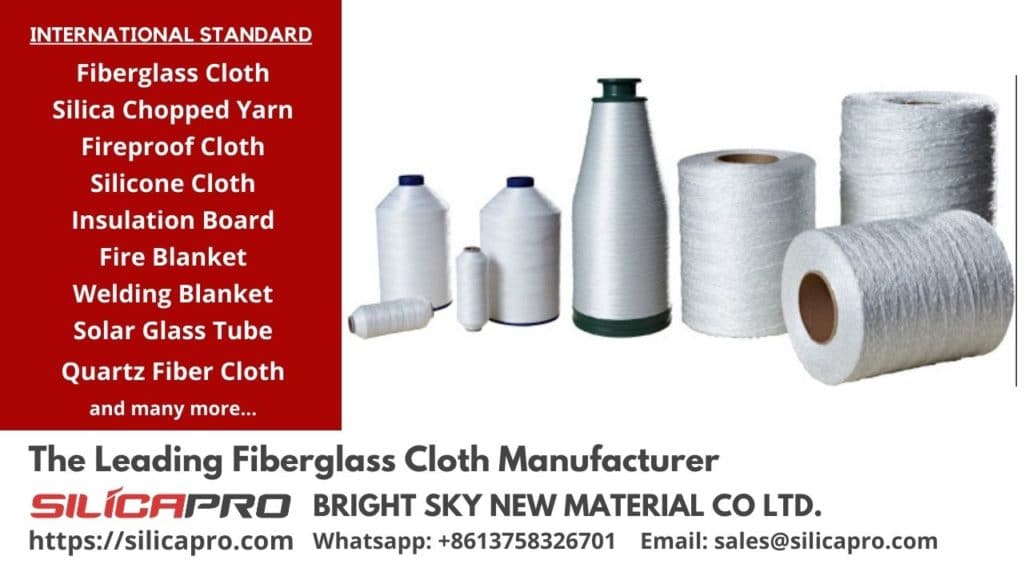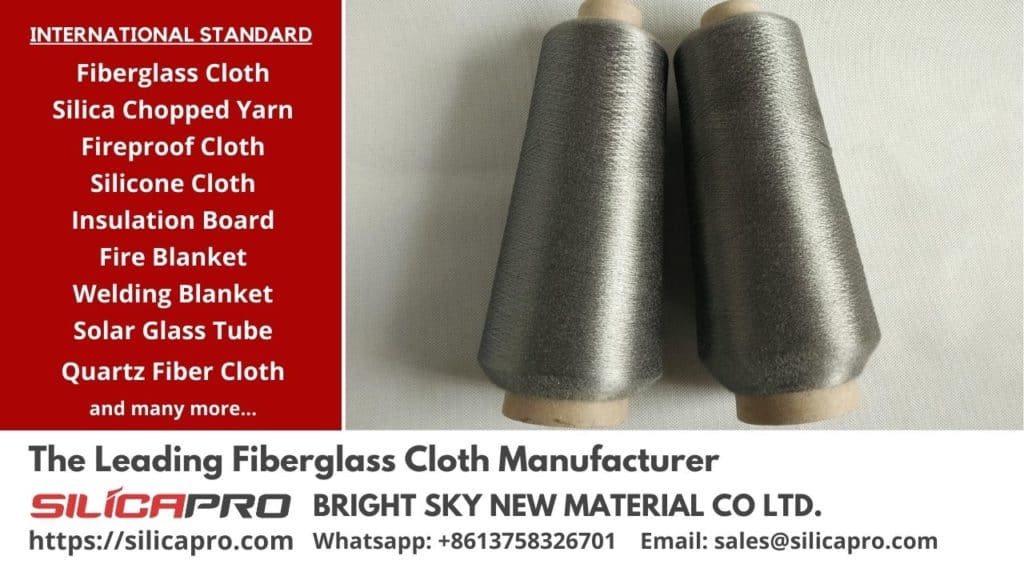
Fiberglass is a material in the form of thin glass fibers that has strong durability. The glass fibers are flattened to form sheets that are arranged randomly. There are various types of fiberglass from a good fiberglass fabric manufacturer in China. These types of fiberglass include; AE-glass, which is a type of fiberglass that is resistant to alkalis. The next type is A-glass which is immune to chemicals.
Fiberglass type A-glass is often used in window glass. Furthermore, C-glass type fiberglass which has a good level of resistance and is resistant to the impacts caused by chemicals. The next type is fiberglass E-glass which is often referred to as electric glass or electrical glass. This type of fiberglass can work as an electrical insulator well. S-glass is a type of fiberglass that has mechanical properties.
Fiberglass has a variety of shapes that are tailored to the needs. The first form of fiberglass is Fiberglass Cloth which is made using a fairly smooth material. Fiberglass cloth is available in various choices, including; filament and glass fiber yarns. Fiberglass cloth is widely used for heat shielding and similar needs.
The next form of fiberglass is fiberglass tape made of material in the form of glass fiber yarn. Thus, making fiberglass tape a product for thermal insulation. Fiberglass tape is often used in heat pipes, wrapping vessels, and similar needs. When you need fiberglass, you need to look at the needs and the fiberglass fabric manufacturer.
Contents
Fiberglass Manufacturer in China
One provider of fiberglass products is Silicapro. We are a company that produces fiberglass products to meet the needs of our customers. Additionally, we do even greater things as we work closely with several universities, and research institutes to develop cutting-edge products, including; aerogels, high-silica needle felts, and microporous nano boards. Our company focuses on fiberglass with ultra-high temperature technology.
Our company has been trusted by various companies in different industries. The industrial fields that we serve include; petroleum, heat treating, glass plants, communications, petrochemical plants, chemical processing nuclear energy, shipbuilding and repair, metal fabrication foundries, power plants and utilities, appliance manufacturing aircraft, and aerospace electronics. The products we offer include; fiberglass needle mats, quartz fiber, high silica fiberglass cloth, and various other products. Of course, you can get these products at affordable prices.
Fiberglass is a lightweight, durable, impact-resistant, and corrosion-resistant material. The fabric has a wide surface area with a fairly good level of flexibility. And fiberglass fabric can be used to manufacture fireproof blankets.
Because fiberglass can indeed be rearranged to form sheets and woven into a fabric, fiberglass is combined with polyester resin for wool insulation, creating a composite that can last a long time. Consider your needs and the appropriate fiberglass fabric manufacturer.
Fiberglass Non-Woven Fabric
Fiberglass nonwoven fabric can be used for walls and ceilings. It can also be used to connect drywall with gypsum. Fiberglass nonwoven fabric is a nonwoven fabric made of very fine glass fibers.
Has characteristics evenly with the surface, durable and soft. This material is designed to cover cracks and strengthen the surface of the top layer to be repaired. You can use fiberglass nonwoven fabric for a modern, durable and beautiful surface. Fiberglass fabric is the best choice.
This type of fiberglass fabric also serves to strengthen and maintain the surface of walls and ceilings to prevent the formation of cracks. Fiberglass nonwoven fiber can also be used for wall coverings. It can also be affixed to the surface of gypsum board, brick, hardboard, wood, concrete, canvas, and even metal. Those of you who want a fiberglass nonwoven fabric can look for a trusted fiberglass fabric manufacturer.
The application of this fiberglass fabric is relatively easy. Fiberglass nonwoven fabric can be used to cover cracks in ceilings as well as interior and exterior walls in spot repairs. This fiberglass nonwoven fabric also acts as a surface reinforcement and provides mechanical strength. You can combine color and creativity to paint various fiberglass textured surfaces to make your walls a stunning work of art. You can use 25 gram/m2 fiberglass fabric for ceiling use and 50 gram/m2 fiberglass fabric for walls.

Polyurethane Coated Fiberglass Fabric Non-Woven Polyester
This fiberglass nonwoven polyester fabric is used as an anti-crack adjuvant for the waterproof coating. Therefore, woven polyester fabrics play an important role. It aims to overcome a series of essential problems in difficult and slow construction, water penetration, thin coating, high cost, and other problems.
In its application, the base surface needs to be cleaned and coated with a waterproof layer. The thing to note the first time is to provide a wet waterproof layer. Next, the polyester fabric is cut flat and gives a second waterproof layer that is applied to the polyester fabric.
After the surface is dry, apply a waterproofing layer for the third time, and finish the waterproof layer is insulated and protected. This application can be used to treat cracks in steel tiles, metal roofs, cement roofs, gutters, corners of rooms, indoor toilet walls, and others.
Another Type of Silicon Fiberglass
Another type of fiberglass is silicon fiberglass which has the property of being able to withstand rainwater, making it suitable for use in outdoor engineering construction. This is based on a problem that most of the water leaks in the house are caused by cracks. So, it is necessary to ensure that the coating used has waterproof properties and is not easily cracked. Fiberglass is made of very thin glass.
In the process of making fiberglass, the glass will be heated until it melts. Then, the molten glass is pressed through the holes to produce very thin glass filaments. The resulting filament yarn is flexible and can be used for various needs. The thing to note is to make sure you get the product through a trusted fiberglass fabric manufacturer. In addition, the filament yarn can be woven into larger pieces of material or left in an unstructured form. This second form is commonly used for sound insulation.
The final application of fiberglass depends on the quality of the fiberglass and course, the length of the strand being extruded.
